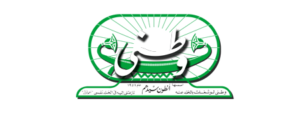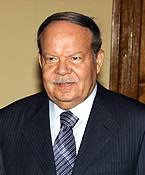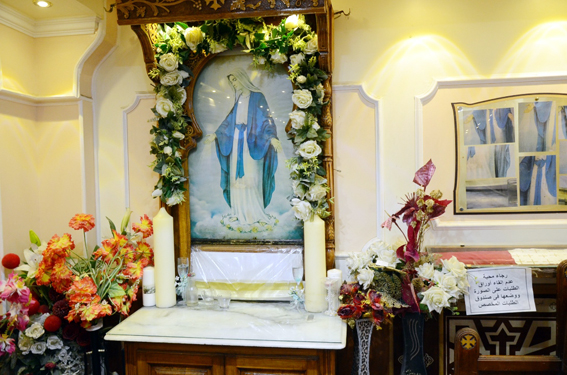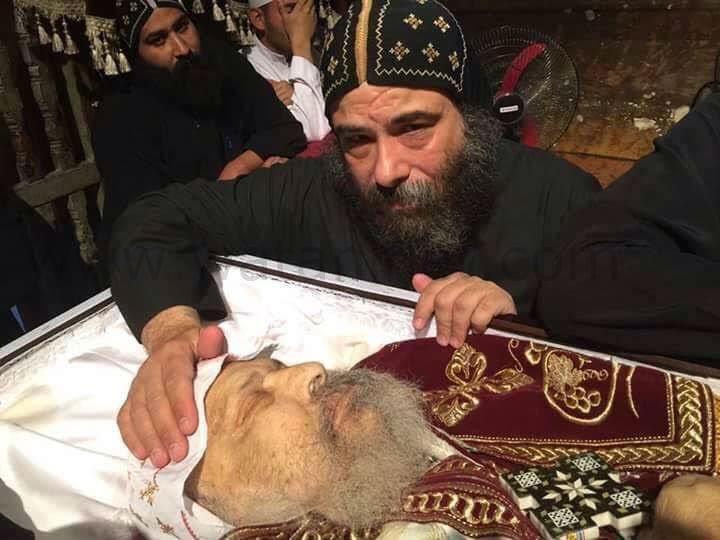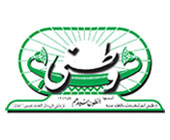Fawzy George Estafanous (1937 – 2021) departed our world on 18 August 2021. Dr Estafanous was a brilliant figure on two fronts: cardiac anaesthesiology and preservation of Coptic history and heritage.
Pope Tawadros II mourned Dr Estafanous, “retired chairman of the anaesthesiology and critical care management division at Cleveland Clinic, Ohio, who was the first in the world to establish a cardiac anaesthesiology department. He founded and ran St Mark Foundation for Coptic History Studies.” The Pope described Dr Estafanous as “a virtuous scholar, faithful servant, and blessed brother … I met him on several occasions, and it gave me great joy to hear his ideas and dreams; I took part with him in a number of conferences in various places in Egypt on the history of monasticism.

“A few days ago I called him when I knew of his illness; his voice was as usual a source of joy.
The Pope prayed for heavenly comfort for the family of Dr Estafanous, the Church, and all who loved him, and for his soul to rest in peace.
Dr Estafanous leaves behind his wife of 55 years Samiha; two sons Marc and John, and five grandchildren: Lucas, Rachel, Mary, Alexandra, and Matthew.
Brilliant career
Fawzy Estafanous was born to a Coptic family in Sohag, some 510km south of Cairo. He graduated from Ain Shams University in Cairo in 1960, and trained in Cairo and Newcastle, England, before heading to the US where he joined Cleveland Clinic in Ohio in 1970. In 1985, he was named to the board of governors, and later, head of anaesthesiology division. He is famous for having built one of the foremost cardiac anaesthesiology departments in the US.
In 1986, Dr Estafanous made a commitment to setting up a programme for acute and chronic pain management, as well as pain research and education. Little more than a decade later the Department of Pain Management at The Cleveland Clinic became one of the top pain management programmes in the country.

Dr Estafanous was one of the early presidents of the Society of Cardiovascular Anaesthesia and a former president of the “invitation only” Association of Cardiac Anaesthesiologists. He published two books on opioids in anaesthesia, and edited the classic Textbook of Cardiac Anaesthesia. He gave numerous lectures and key note presentations at national and international forums. He also had editorial roles on national and international peer review journals, including the Cleveland Clinic Journal of Medicine.
Fawzy Estafanous served as representative of Cleveland Clinic and board member for Dar al-Fouad Hospital in Cairo, considered one of the most distinguished heart hospitals in Egypt.
Coptic effort
Throughout his life, Dr Estafanous was highly devoted to the Coptic Orthodox Church. His love for the Cleveland congregation and dedication to the local Church community translated into substantial efforts to support St Mark’s Church in Cleveland.
Upon his retirement from medical duties, Dr Estafanous founded St Mark Foundation for Coptic History Studies in 1998, with the aim of promoting the study of the Coptic Church’s history and heritage through symposiums, conferences and publications.
He put the idea forward to Pope Shenouda III (Coptic Patriarch in 1971 – 2012) who approved it, gave it his official blessing, and generously provided it with an office in the Coptic Studies Institute building at St Mark’s Cathedral grounds in Abbassiya, Cairo. Pope Shenouda’s “blessing” read: “This Foundation shall carry out thorough research and collect complete and documented information on Coptic history since the coming of Christianity to Egypt up to the present. Its studies shall include all areas of Coptic history, embracing all references in libraries and museums inside and outside Egypt.

“The Foundation has to publish its research and books regularly and systematically to ensure they are available to the greatest number of individuals, churches, libraries, organisations, and to our colleges and religious institutes. The Foundation is to be a definitive resource and reference for Coptic history.”
The Pope exhorted all Coptic bishops and clergy, also professors in the Coptic Orthodox Seminary, to support the project.
Pope Shenouda entrusted the Foundation with the ancient Coptic manuscripts at St Bishoy Monastery in the Western Desert to photograph, index, restore, and document them; work which extended to other manuscripts inside and outside Egypt. Among its outstanding work, the Foundation compiled a digital archive of 250,000 Coptic manuscripts on 18 CDs, and gifted it to the Bibliotheca Alexandrina.
Every other year symposium
When Pope Tawadros II succeeded Pope Shenouda as patriarch in 2012, he also blessed and supported St Mark’s Foundation and its vision and mission which, according to renowned Coptologist Gawdat Gabra who is a key figure in the Foundation, involved a writing of an up-to-date history of Christianity and monasticism in Egypt. For that purpose, the Foundation has organised every other year an international symposium on Christianity and monasticism in a region in Egypt, followed by a publication on the topic. Volumes published have included various Coptic topics, among them research on Christianity and Monasticism in Fayoum Oasis; and in the Upper Egypt dioceses of Akhmeem and Sohag, Naggada and Qus, Luxor, and Giza; also on Christianity and Christian monuments in Aswan and Nubia.

The Foundation plays an instrumental role in the Coptic Cultural Centre of the Coptic Orthodox Patriarchate at Anba Rweiss, and cooperates with Shenouda the Archimandrite Coptic Society on many cultural activities.
Tributes
Among the tributes paid to Dr Estafanous was a warm word by Anba Thomas, Bishop of Qoussiya and Meir: “Dr Estafanous was a greatly loved star in Coptic modern history. He was a live example of love, humility, knowledge, creativity, care, principles, straightness and the effort to serve the Church … While we mourn his loss others are rejoicing to meet him behind the veil. I thank God that I met Dr Estafanous and all what he taught me, May the lord repose his soul.”

On his Facebook page, Saad Michael Saad, Chair of the Coptic Studies Council at Claremont Graduate University, wrote: “I am saddened by the news that the great man of God, the Coptic Church, Egypt, the USA, and the medical profession, Dr Fawzy Estafanous, slept in the Lord … But it is God’s will for the good giant-servant to receive the heavenly reward. Besides his superb medical career as Chair of the Department of Anaesthesiology at the prestigious Cleveland Clinic, Dr Estafanous was a visionary and overachiever in promoting Coptic studies.”
Hany Takla, Founding member of St Shenouda the Archimandrite Coptic Society, and lecturer at St Athanasius and St Cyril Theological School, wrote: “Dr Estafanous was a great man who will be remembered by the many whose medical careers he launched … as well as the Renaissance of Coptology in Egypt through his tireless work with the St Mark Foundation for Coptic History. I was involved with him through my work at St Shenouda the Archimandrite Coptic Society since 1997 … I just wish to mention how humble he was despite his accomplishment in all of his endeavours … First and foremost his motivation was serving his beloved Church, our Coptic Church. He accepted criticism and even insults without responding in kind; he also accepted honour humbly without boasting.”
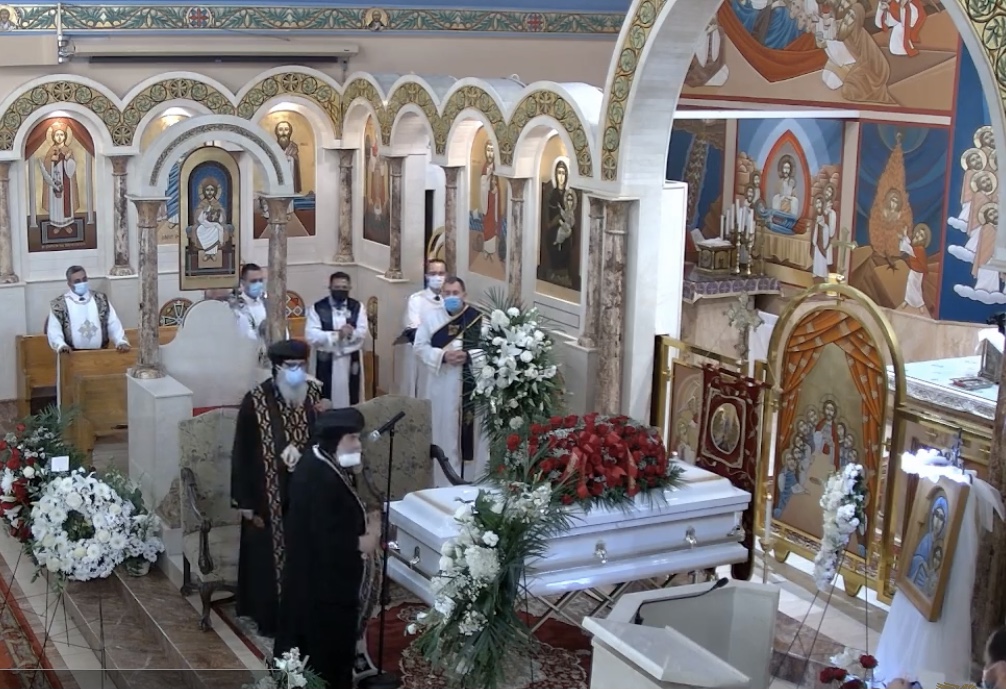
…Reminiscences
Dr Estafanous came along as a man of simple modesty, with a larger-than-life smile that seldom left his face. When he talked about anything Coptic, he did so with unconcealed passion.
In an informal talk with Watani in February 2020 at the offices of Saint Mark Foundation in the grounds of St Mark’s Cathedral in Abbassiya, Cairo, Dr Estafanous reminisced about the establishment of the foundation.
Study first
“When we founded our church in Cleveland,” Dr Estafanous said, “the Lord sent us an architect from Ukraine who was very skilled and an expert photographer. I made him a proposal that he works with the Foundation on photographing Coptic monasteries. His reply was that no one could photograph anything well before thoroughly studying it. This phrase remained in my mind all through as I contemplated what needed to be done to document Coptic history.

“On my next visit to Cairo, I talked to renowned historian Younan Labib Rizq (1933 – 2008) who was a Copt. But Mr Rizq had never tackled Church history. However, on a following visit he introduced me to Soliman Nessim, Soliman Qelada, and Gawdat Gabra, all of whom are prominent figures in Coptic studies. We agreed on the nature of the work required, and that Dr Gabra should do all necessary revision of publications.
“The first book we published was a reprint of The History of the Coptic Nation by Yacoub Nakhla Rufaila on the occasion of the centenary of its first publication in 1898. It is an important reference work, and we were happy when it quickly sold out.”
Seven regions
Dr Estafanous continued: “We then moved on to holding conferences on studies of the early Christian centuries in Egypt, and on monasticism and monasteries. We divided Egypt into seven regions: Nubia, Aswan and Luxor; Sohag and Akhmeem; Qus and Naggada; Assiut; Beheira and Pentapolis; and Alexandria. We decided to hold a conference on each region.
“We made the stunning discovery that there were many more non-Egyptian researchers on Coptology than there were Egyptians! Anyhow, we went ahead with inviting international Coptologists; Dr Gabra helped us on that front, whereas Fahim Wassef, Hoda Garas, and myself made the arrangements for the conferences. The means of the Foundation were limited, so we used to hold the conferences at monasteries, stay at their guest houses and eat their fare, then thank them and make a donation to the monastery when the conference was over.
“In more than one case we faced problems of insufficient accommodation for the conference participants, but every time the problem was promptly solved through the grace of God and the helpful support of Bishops.
“Our conferences gained an excellent reputation, and more and more researchers, including Egyptian ones, were eager to join.
“We published the studies presented in each conference in books that were issued by the American University in Cairo Press.”
Unwritten history
“The success of the conferences on Coptic studies,” Dr Estafanous said, “led us to another idea: What about the unwritten history of Copts, the history passed on through oral tradition? Such tradition was under threat of dying out because it was not written. So we decided to look for persons and places that conserved that tradition in various dioceses in Egypt, and record their words. We also looked for old, forgotten booklets that tackled local Church history, and reprinted them. As much as the work was arduous, it was very rewarding. In this way we published books on Beheira and Pentapolis, Aswan and Nubia, Sohag and Akhmeem, Naggada and Qus, and Assiut. We are working on the book on Alexandria.”
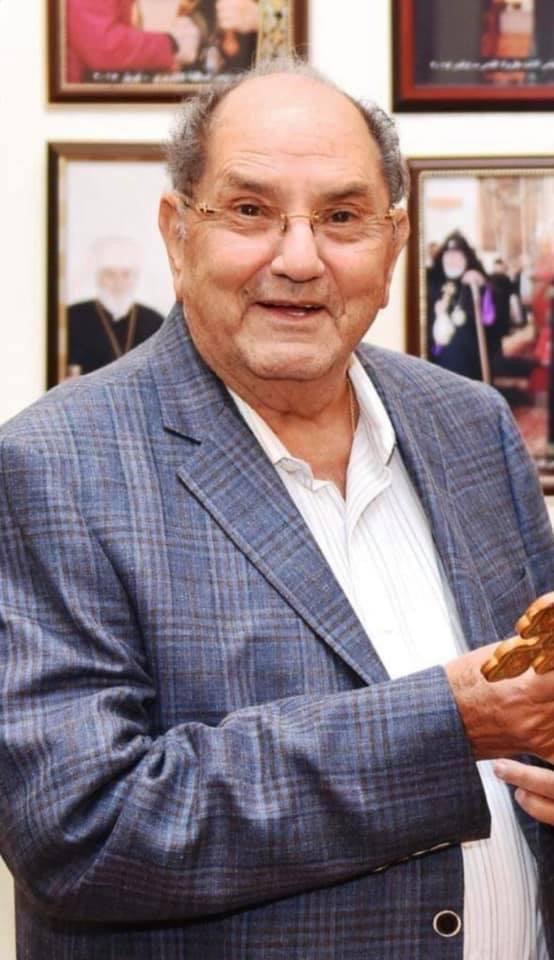
Restoration of monasteries
“Among those who took part in our first conference,” Dr Estafanous recalled, “was Elizabeth Bolman, a history professor who was in contact with an organisation that specialised in restoring ‘forgotten or neglected sites’. Through the efforts of Ms Bolman, the Foundation was able to get the White Monastery and the Red Monastery in Sohag restored.
“It was then time to go back to the words of the Ukrainian architect, which had never left my mind, that photography can only be done well once a site is thoroughly studied. We started a project of professional photography of Coptic historic sites, at the hand of a team of American photographers. We published picture books on 40 sites in Egypt, including the White and Red monasteries, sites in Naggada and Qus, the monasteries of St Anthony and St Paul the Hermit, the Hanging Church in Old Cairo, and the church of Mar-Morqos in Giza.
“Among our publications was a book on the history of Coptic language and literature; the book sold out quickly and was reprinted.
“Another of our ambitious projects is one that has been ongoing for some four years and is yet not completed, that of translating the Coptic Encyclopaedia from its original English into Arabic. This project is extremely time consuming because of the extensive translation and editing required.”
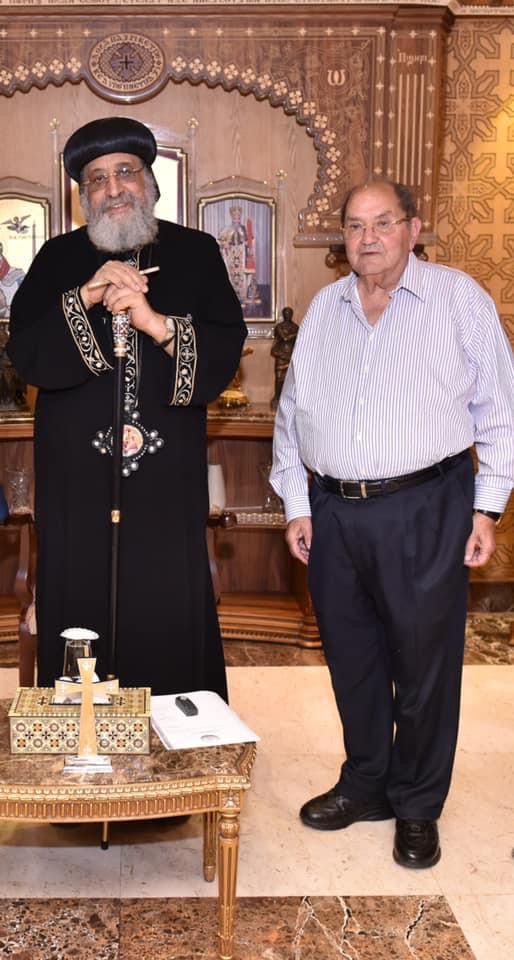
Cheerful mulid
“Amid all our arduous work,” Dr Estafanous said, “we attempted to do something cheerful. We asked Pope Tawadros to hold a mulid for St Mark, just as there are mulids for the Holy Virgin and St George in various places and times all over Egypt. A mulid is an Egyptian tradition that goes back to ancient times of holding a folk celebration for a saint or holy figure; it lives to this day among Copts and Muslims. The Pope was stunned: how could a spontaneous ‘folk’ celebration be arranged? Finally, he agreed to give it a go, and asked Fr Boulos Halim to see what could be done. The outcome was a two-day celebration at St Mark’s: the first saw choirs from churches all over the country singing and performing in honour of St Mark who brought Christianity to Egypt, and the second saw a conference on St Mark and his work.
“The years passed, and we grew older. We assessed our work at the Foundation and started looking into the future. Now Ashraf Nageh is director of St Mark’s Foundation, leading a team of scholars who work to carry on the dream, and to preserve Coptic heritage from generation to generation.”
Watani International
25 August 2021

